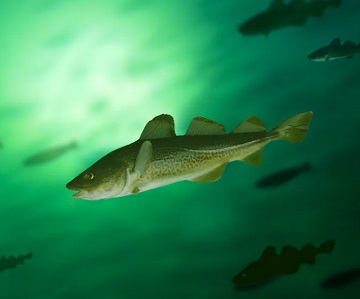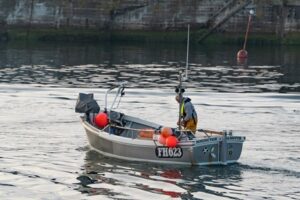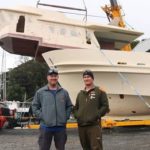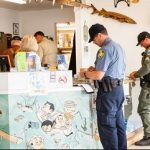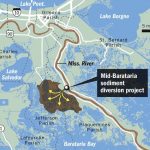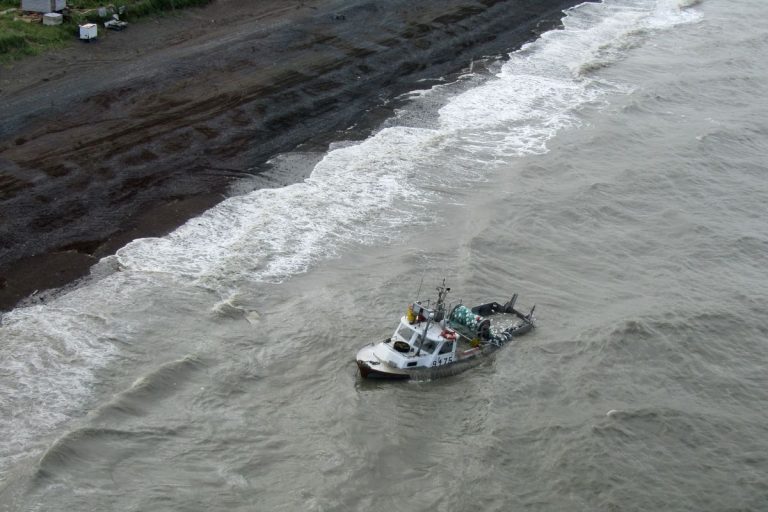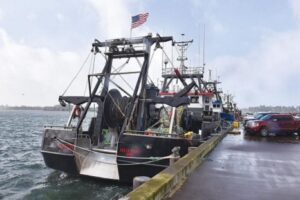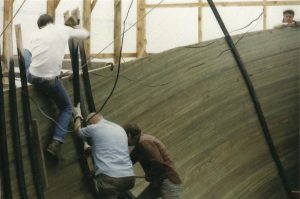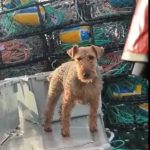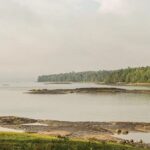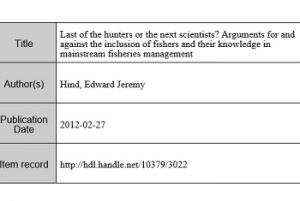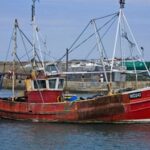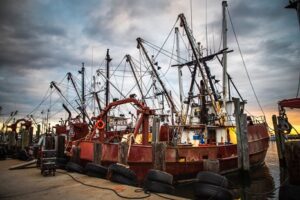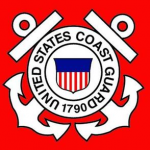Tag Archives: DFO
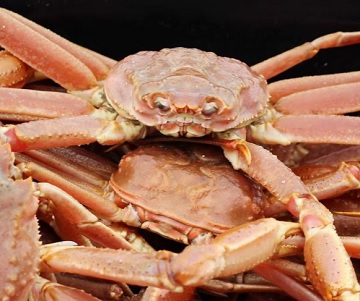
Still a lot of crab to be caught in Newfoundland and Labrador
A 2022 report by consultant David Conway, who was commissioned by the province to review the fish price setting system, recommended the industry begin discussions in October of that year to establish a formula for crab prices for the 2023 season. However, discussions between the FFAW and ASP didn’t get going until March, partly because both groups saw a change in leadership over the winter with Keith Sullivan resigning as union and Derek Butler leaving as executive director of the ASP. The decision on prices for this season fell to the province’s Fish Price Setting Panel which used the final offer selection model, where processors and the union each made a pitch on price and the panel had to choose one or the other. >click to read< 13:12

DFO says it has enough resources to monitor Indigenous lobster fishing in Nova Scotia
Fisheries and Oceans Canada (DFO) says its enforcement branch will be on the water and adequately equipped to monitor compliance of First Nations lobster fisheries this summer. The pledge follows the chaotic fishery for baby eels this spring where there was widespread illegal activity by some Indigenous and non-Indigenous harvesters. DFO shut down the legal elver fishery, affecting both commercial licence holders and Indigenous groups with fishing plans approved by the department. But “poaching”, as federal Fisheries Minister Joyce Murray called it, continued. “I want to clarify they are two very different fisheries,” Maritimes region director of conservation and protection Tim Kerr told reporters Monday in a briefing on Indigenous rights-based lobster fisheries. >click to read< 08:35
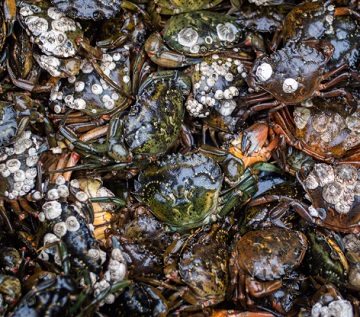
Crab ice cream, anyone? How we might be able to eat our way out of an invasive green crab problem
They’re tiny and they’re wreaking havoc on our coasts, but they also taste pretty good. European green crabs have posed a problem off the coast of Vancouver Island for decades now, and while current conservation efforts have focused on deep freezing them and throwing them in a landfill, some suggest eating them instead. The species, which is found across the Pacific Northwest is aggressive and feeds voraciously on shellfish; they have no natural predators, and they reproduce at a high rate. Each female can have up to 185,000 babies at a time. It’s not just a West Coast problem. Fisheries and Oceans Canada notes that the species, which originally came from Europe and North Africa and likely hitched a ride to North America on wooden ships in the early 19th century, first invaded east coast waters in the 1950s. >click to read< 09:50
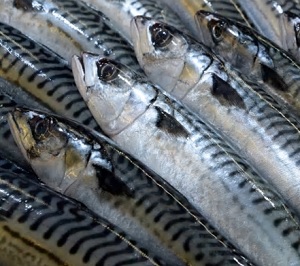
Atlantic mackerel moratorium extended for 2023 season
Fisheries and Oceans Canada has extended the closure of Atlantic mackerel commercial and bait fishing in Atlantic Canada and Quebec for the 2023 season. In a notice to fish harvesters on Wednesday, the federal department said it was continuing the moratorium “to allow the stock to rebuild.” The moratorium has been in place since March 2022. In its notice, Fisheries and Oceans Canada said results of a Canadian stock assessment found Atlantic mackerel “declined further in the critical zone since the last assessment, with spawning stock biomass at its lowest-observed value.” The critical zone means serious harm is occurring. >click to read< 18:36
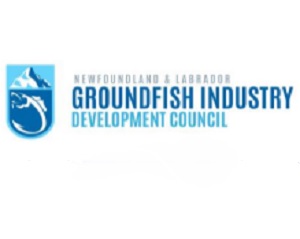
The Newfoundland and Labrador Groundfish Industry Development Council are Disappointed with the Northern Cod Maximum Allowable harvest announced today by DFO
“The NLGIDC were hoping for an increase in the harvest level for 2023 based on the extremely successful cod fishery in the 2J3KL area in 2022”, said James Baird, the chair of the NLGIDC. “Weekly harvest rates for the first 4 weeks of this fishery in 2022 all surpassed the highest weekly landings observed in this fishery since 2016”, continued Baird. “Additionally, the lack of science assessments for Northern cod in 2022 and 2023 continue to hinder the development of this iconic fishery and is a cause of considerable concern for the Newfoundland and Labrador fishing industry”, said Paul Grant, the Executive Vice-President of Beothic Fish Processors Ltd. >click to read< 18:48
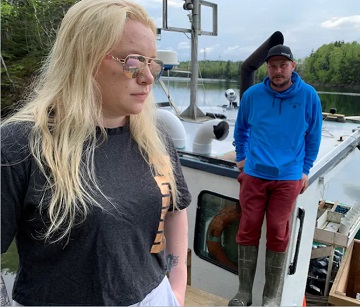
‘They look at me as an outsider’: Cape Breton fisherman says boat burned, gear vandalized
Adam Morrison said he bought the licence for more than $800,000 and had fished lobster previously in a nearby community, Big Bras d’Or, for an employer. This was a chance to have his own boat, literally in his backyard. “I put my house on the line for this lobster licence,” Morrison told the Cape Breton Post. “They don’t want to let you make a go of it … They refuse to believe I went out on my own and got this.” In early May, Morrison, an early riser due to his profession, managed to stave off disaster when he noticed a fire onboard his boat, docked at the wharf on the rear of the property. Photos, >click to read and comment< 11:06
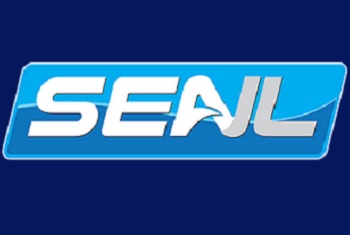
Conservation must trump profit; SEA-NL calls on DFO to close window on high-grading in crab fishery
Seaward Enterprises Associations of Newfoundland and Labrador (SEA-NL) has called on the federal minister of Fisheries and Oceans to take immediate action to close a window that’s been opened by processors/buyers to allow for high-grading in the snow crab fishery. “Conservation must trump profit, which is obviously not the case with the processing sector that is out to scrape every last cent from the inshore fleet at the expense of the future health of the stock,” says Ryan Cleary, SEA-NL’s Executive Director. For years there has been an industry-managed two-price system for snow crab in Newfoundland and Labrador — with a higher price paid for crab with a greater than four-inch carapace (currently $2.25/lb), and lower price for smaller, but still legal-sized crab ($1.90/lb). >click to read< 11:07
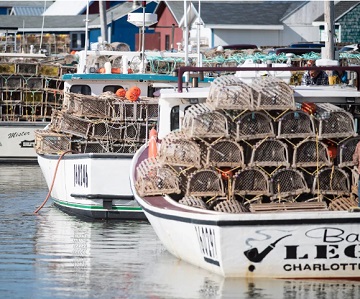
Areas closed to protect North Atlantic Right whales ready to re-open Friday in western P.E.I.
Charlie McGeoghegan, the chair of the Lobster Fishers of P.E.I., said the re-opening is good news. “They were fishing in 80 to 100 feet of water, a lot of them, and the lobster had just started to come on in that area. And then they were forced to pull all the gear out of that area and move it into 60 feet of water or less,” he said. “There’s basically 400 boats in that area or close to it. If you take all those boats and put them in a little narrow strip between the shoreline and 60 feet depth of water … it’s an over-congestion of gear.” McGeoghegan said losses over the past two weeks could be significant for some crews. >click to read< 14:28

Fishing area closed after North Atlantic right whale sighting set to reopen this week
A lucrative lobster fishing area in the Maritimes is set to reopen this week after a sighting of North Atlantic right whales shuttered the fishery just weeks into the spring season. The endangered whales were spotted earlier this month in the Gulf of St. Lawrence, northeast of Prince Edward Island’s Malpeque and Cascumpec Bays. The sighting triggered a 15-day closure of popular lobster fishing grounds — part of Lobster Fishing Area 24. The federal Fisheries Department says the fishing area is set to reopen Friday. But it says two surveillance flights are required before the area reopens to fish harvesters to determine whether whales are still present. >click to read< 13:32
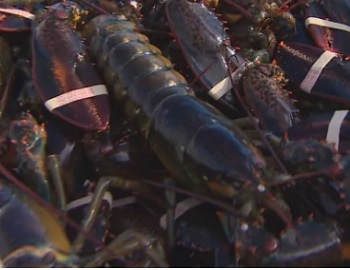
Stock assessments show Maritime lobster population strong, fishery sustainable
Adam Cook is a DFO biologist who tracks lobster populations along the Scotian Shelf and Bay of Fundy, waters that support nearly 3,000 commercial licence holders in 12 lobster fishing areas (LFAs). Cook and his colleagues recently posted stock assessments for 2022. He said all LFAs in the Maritimes are in a healthy zone for stock status. “Which suggests there’s still enough lobster to not raise any sort of conservation concerns. The commercial biomass is doing quite well,” Cook said. It’s the same story in the southern Gulf of St. Lawrence, although DFO’s stock assessments for five fishings area in that region have not been posted. >click to read< 10:17
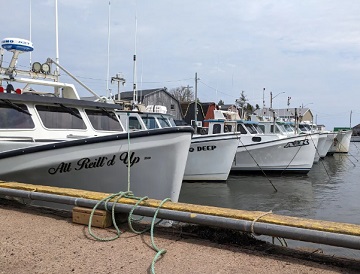
‘Aggravation’ expected when part of lobster fishing area closes
Chris Wall is among those being asked by the Department of Fisheries and Oceans to remove all their gear from a portion of lobster fishing area 24 before it closes on Tuesday at 5 p.m. due to the confirmed sighting of a North Atlantic right whale. “It will affect the bottom line because I think you’re going to find more people in a smaller area trying to catch the same amount of lobsters,” Wall said. “So … it will affect everybody. It’s just going to cause some aggravation, for sure.” Wall isn’t aware of any right whale ever getting caught in lobster fishing gear on P.E.I., he said. >click to read< 08:56
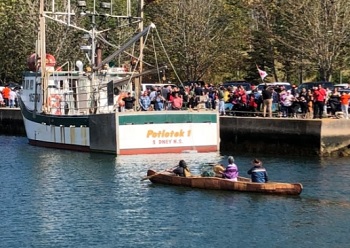
Bigger Mi’kmaw lobster fishery possible because DFO redistributed unused licences
Mike Leonard, director of Indigenous fisheries management for DFO’s Maritimes region, said the federal department has bought back lobster licences over the years as commercial fishers voluntarily relinquished them, creating a bank of licences that Indigenous communities can access. That process has allowed Eskasoni to join two other First Nations in the moderate livelihood fishery during this spring’s season without affecting the health of the lobster stocks, he said. “In the first year, in 2021, we worked with Potlotek First Nation and then last year We’koqma’q First Nation joined as well and this year it’s become an Unama’ki approach, so across the Unama’ki traditional territory, which aligns with Cape Breton,” Leonard said. >click to read< 08:55
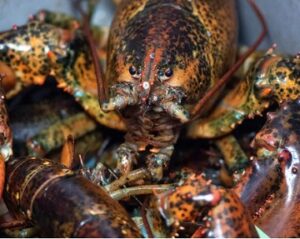
How warming waters around P.E.I. could affect snow crab and lobster
Research scientist Joël Chassé says as the atmosphere warms, the ocean waters around P.E.I. are also heating up. “Changes are happening. It’s not deniable anymore. And if the these changes don’t slow down, we will have to adapt to these changes.” Chassé said there are implications for some fish species, some positive and some negative. Fisheries and Oceans biologist Tobie Surette said that while lobster is a warm water coastal species, snow crab prefer deeper, colder waters. “Lobster has largely benefited from the warming climates, at least so far,” he said. Surette said they don’t know exactly why that is. (Snow Crab) And for now, they are doing well: “We’re at the third-highest biomass in the history of the survey right now.” But Surette knows that could change. He has been in contact with snow crab scientists from Alaska. Photos, >click to read< 18:51

Clearwater Seafoods wants 72 tonnes of lobster added to its annual harvesting quota
The Indigenous-owned company has exclusive rights to Lobster Fishing Area 41, or LFA 41, off southern Nova Scotia, where Clearwater maintains a long-held quota of 720 tonnes. Last fall, the Membertou First Nation and Mi’kmaw partners in the company asked the Department of Fisheries and Oceans to increase the total allowable catch by ten per cent. In response, DFO has issued an “interim” total allowable catch of 720 tonnes for 2023 while it considers this request. The Brazil Rock Lobster Association, the Coldwater Lobster Association and the LFA 33 Advisory Committee have submitted letters to DFO in opposition. >click to read< 08:44
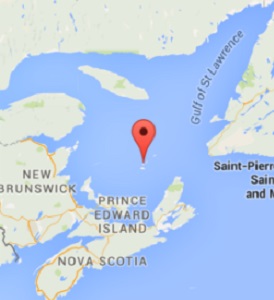
First sighting of right whales in Canadian waters triggers partial fishing closure
The federal Fisheries Department says it has spotted endangered North Atlantic right whales in Canadian waters for the first time this year. The department says two whales were seen Sunday by a surveillance aircraft in the Gulf of St. Lawrence, northeast of the Îles-de-la-Madeleine. It says fishing in the area where the whales were spotted will be closed for 15 days started Thursday at 5 p.m., and a 15-day vessel slowdown will also be in effect. video, >click to read< 18:33
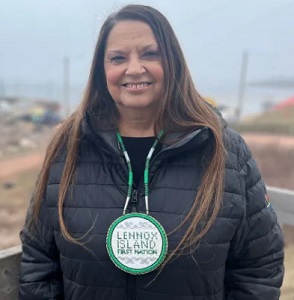
Lennox Island, DFO strike deal for 2023 moderate livelihood lobster fishery off P.E.I.
The Department of Fisheries and Oceans says it has struck a deal with Lennox Island First Nation for a treaty-protected lobster fishery off P.E.I.’s North Shore for the 2023 spring season. In a statement to CBC News, DFO says the one-year interim understanding was reached on Wednesday. The band had said its boats would begin to set about 1,000 lobster traps on Saturday with or without DFO approval. “The Government of Canada is committed to advancing First Nations’ Supreme Court-affirmed treaty right to fish,” DFO officials said in a statement sent to CBC News on Friday. “Designated community members are authorized to fish up to 1,000 traps total in Lobster Fishing Area (LFA) 24 during the spring 2023 commercial lobster season … >click to read< 15:40
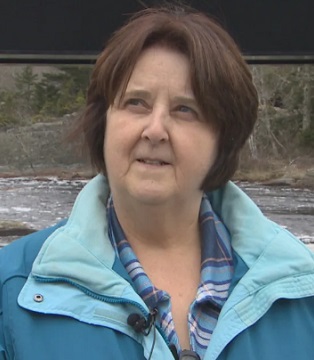
Striking fishery officers stand aside as poaching continues for lucrative baby eels
“Our net should be here, not some illegal fisherman,” says Brenda Golden, a co-owner of Wine Harbour Fisheries. Golden is looking under the Liscomb River bridge where a fine mesh net supported by floats stretches into the black foamy water. Hoping to have the net removed, Golden’s daughter reported it to the local Department of Fisheries and Oceans on Tuesday. Fisheries officials did not provide a response when asked about this incident. Nor to questions about the impact of the ongoing Public Service Alliance of Canada strike on its ability to rein in widespread illegal harvesting. >click to read< 07:15
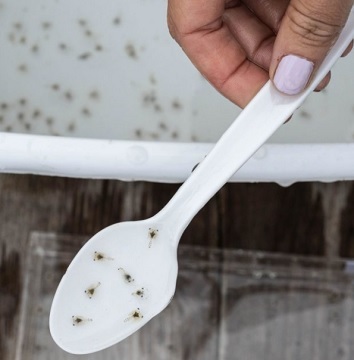
Shining the Light on Baby Crabs
The light trap at Whaler Bay is one in a network of 20 traps placed throughout the Canadian side of the Salish Sea, from Read Island in the north to James Island near Sidney in the south, as part of the Hakai Institute’s multiyear Sentinels of Change program. Launched in 2022 to mark the United Nations Decade of Ocean Science for Sustainable Development, this community-centered initiative involves understanding how marine invertebrates are adapting to the changing environment. The light trap project, which focuses on the native Dungeness crab—a much-loved treat on the coast that can grow to the size of an adult’s outstretched hand—is a part of this program. Photos, >click to read< 10:17

Lennox Island to fish 1,000 lobster traps off P.E.I.’s North Shore, with or without DFO signoff
The chief of Lennox Island First Nation says it will fish 1,000 traps in the spring lobster fishery off P.E.I.’s North Shore this year as part of its treaty-protected fishery — whether or not the Department of Fisheries and Oceans approves. The First Nation was planning to do the same last year, but ended up reaching an understanding with DFO to fish no more than the 300 traps the federal government could authorize in the spring, and later fish another 700 off the South Shore as part of the fall lobster fishery. Chief Darlene Bernard said she’s always been clear about her community’s intention to fish all 1,000 traps out of their own wharf on Lennox Island in the spring of 2023, and now they’ll be following through. >click to read< 11:38
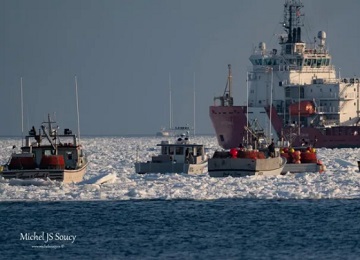
Cape Breton fishermen say ice was a problem because DFO didn’t follow its own policy
Some Cape Breton fishermen say if the Department of Fisheries and Oceans hadn’t opened the Gulf of St. Lawrence snow crab season too early, icebreakers would not have been needed to get boats in and out of Cheticamp harbour. Andrew Bourgeois, president of the Gulf of Nova Scotia Fishermen’s Coalition and a director of the Gulf fleet planning board, said DFO officials usually agree to wait until all the coasts are ice-free, but not this year. “I think if DFO would have followed their protocol, I don’t think there would have been an issue with the ice,” he said. “The protocol says that if there was ice at 20 fathoms or deeper that it shouldn’t open, it wouldn’t open. And they opened it anyways.” >click to read< 13:11
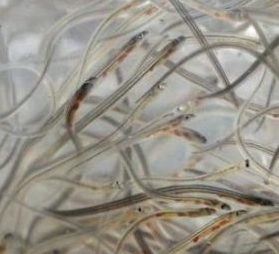
DFO halts baby eel fishery in N.S., N.B for 45 days over escalating conflict
A news release from DFO on Saturday said after extensive monitoring it was determined that unreported removals made up a significant percentage of elver, or baby eel, landings. Fishery officers conducted extensive patrols from March 13 to April 10 to ensure compliance with regulations for the harvesting and sale of elvers, according to the release. The release states an increase in conflicts resulting in violence and threats risks the safety of harvesting and creates a threat to the management and control of the fishery. >click to read< 14:36

FFAW wants mackerel fishery re-opened
On Thursday, Mar. 30, 2022, the Department of Fisheries and Oceans Canada (DFO) issued a release announcing there would be no directed commercial or bait fishing for southern Gulf spring herring and the closure of the Atlantic mackerel commercial and bait fisheries in Atlantic Canada and Quebec. Now in 2023, Fish, Food, & Allied Workers (FFAW) is calling on the government to reopen the Atlantic mackerel fishery, stating that Newfoundland and Labrador communities shouldn’t bear the burden of this decision. “The biggest problem is that the fishery was closed when it should not have been,” said Courtney Glode, Communications Officer with FFAW. The U.S.A. announced in March that they will proceed with the commercial fishery in 2023, on the East Coast stock shared with Canada; however, an announcement on whether or not the moratorium will be lifted in Canada has not yet been made. >click to read< 10:07
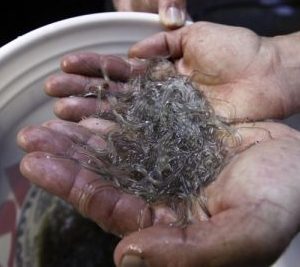
Canada gives Mi’kmaq 14% of lucrative Maritime elver fishery for 2nd year
For a second year, the federal government is giving Mi’kmaw First Nations 14 per cent of the lucrative Maritime fishery for baby eels — or elvers — without compensating commercial licence holders. The transfer implements the Mi’kmaw treaty right to fish for a moderate living, but also sets the stage for further court challenges by commercial elver licence holders. “I’m quite confident that we will be taking legal action based on this again,” said Michel Samson, a lawyer representing Wine Harbour Fisheries. Wine Harbour is one of several licence holders in federal court trying to overturn the 2022 decision, saying it was unfair and rushed. >click to read< 08:59

‘What we’re looking for is a fair shake’: Newfoundland inshore crab fishers resume pop-up protests around St. John’s
They didn’t get a clear answer from the Department of Fisheries and Oceans on Monday, so inshore crab harvesters are holding “pop-up” protests again today, March 28, in St. John’s. Jason Sullivan and the 3L protestors say the crab stocks in the zone should be assessed as one biomass rather than as separate inshore and offshore stocks. That way, the protestors say, the inshore would be treated the same as the offshore fleets, using the same exploitation rate formulas if the crab stocks are growing. >click to read< 14:52

SEA-NL on 3L
Seaward Enterprises Association of Newfoundland and Labrador demands DFO immediately unify inshore and offshore snow crab fishing areas off eastern Newfoundland into a single biomass, and explain to the entire inshore fleet why the department divided them in the first place. “DFO disrespects the entire inshore sector in fishing zone 3L by favouring bigger boats over smaller boats in the same fleet,” says Ryan Cleary, SEA-NL’s Executive Director. “DFO must reveal the science behinds its decision to divide the crab fishing zone in the first place,” added Cleary. “The absence of science or questionable science at best tells smaller boat owner-operators the department wants their enterprises eliminated.” >click to read the press release< 08:12
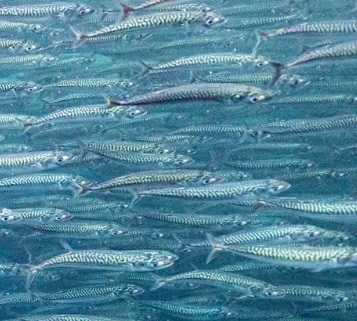
‘The people’s fish’: Atlantic mackerel stocks have collapsed – can a moratorium bring them back?
Canada’s Atlantic mackerel population is a shadow of what it once was, and its decline threatens the well-being of the people who depend on it. Mackerel supports one of Atlantic Canada’s top recreational fisheries, and one of its oldest commercial fisheries. The fish is also used for bait, and it has an important place in Indigenous cultures. The same migratory stock supports recreational and commercial fisheries in the U.S. Last March, the federal Department of Fisheries and Oceans closed Canada’s commercial and bait mackerel fisheries for one year and placed daily personal limits on the recreational fishery, to give the population time to rebound. But the U.S. fishery remains open, albeit with a reduced quota. Next week, federal Fisheries Minister Joyce Murray will decide whether to reopen the Canadian fishery. The DFO’s latest studies have found no sign of recovery in the mackerel stock. Photos, >click to read< 13:09
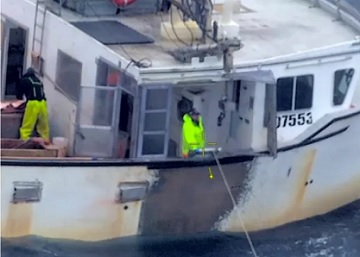
Nova Scotia halibut boat fined $5,000 for fishing inside Gully Marine Protected Area
A Nova Scotia fishing captain has pleaded guilty to fishing inside the Gully Marine Protected Area near Sable Island. It’s the first conviction in the Department of Fisheries and Oceans Maritimes region for unauthorised fishing inside a marine protected area. Captain Phillip Chetwynd was fined $5,000 in Port Hawkesbury provincial court this week for non-compliance with licence conditions under the Fisheries Act. Images taken by a DFO surveillance plane show the captain at the rail hauling the tail end of the long line with crewmen dressing the catch on board. >click to read< 09:30
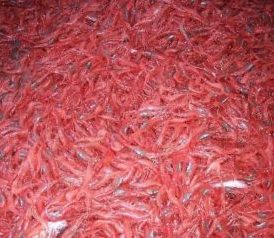
One shrimp stock off Labrador doing well but missed surveys means no new data for two other fishing zones
This news likely won’t come as a great surprise to most in Atlantic Canada’s shrimp fishing industry: scientists at the Department of Fisheries and Oceans (DFO) can’t provide a full assessment on two northern shrimp stocks on Canada’s east coast this year because they don’t have new data. In February DFO confirmed offshore trawl surveys in shrimp fishing areas (SFA) 5 and 6 could not be completed because a research ship was out of commission. In a technical briefing with media earlier Thursday, March 23, stock assessment biologist Nicolas LeCorre provided information mainly on SFA 4, the one zone where offshore trawl surveys were completed. >click to read< 08:04
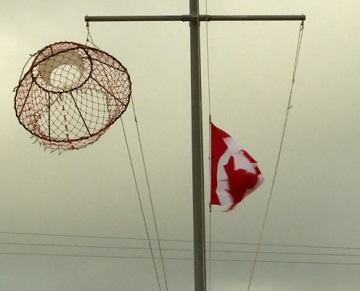
Crab harvesters take protest inside St. John’s hotel as price-setting meetings continue
Newfoundland and Labrador’s crab fishermen resumed their protest Wednesday, calling for a quota increase and changes to the federal government’s fisheries management. Dozens of harvesters descended on a Fisheries and Oceans Canada office in the east end of St. John’s early Wednesday morning, with some using their vehicles to block traffic from coming in or out. Some used symbols of the fishery to protest, like a crab pot placed on the building’s flagpole. Fisherman Jason Sullivan said he and his colleagues are calling for changes to the precautionary approach framework that separates the inshore fishery of Zone 3L from the offshore fishery. >click to read< 16:44






